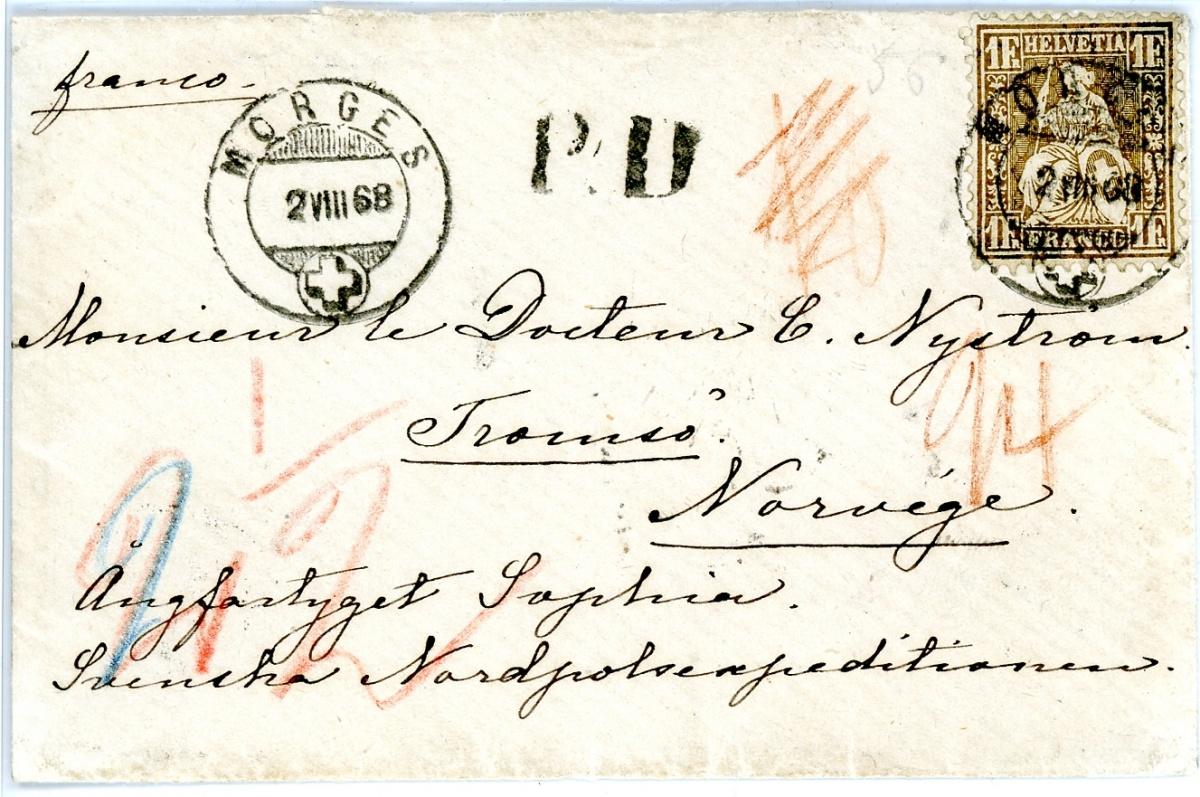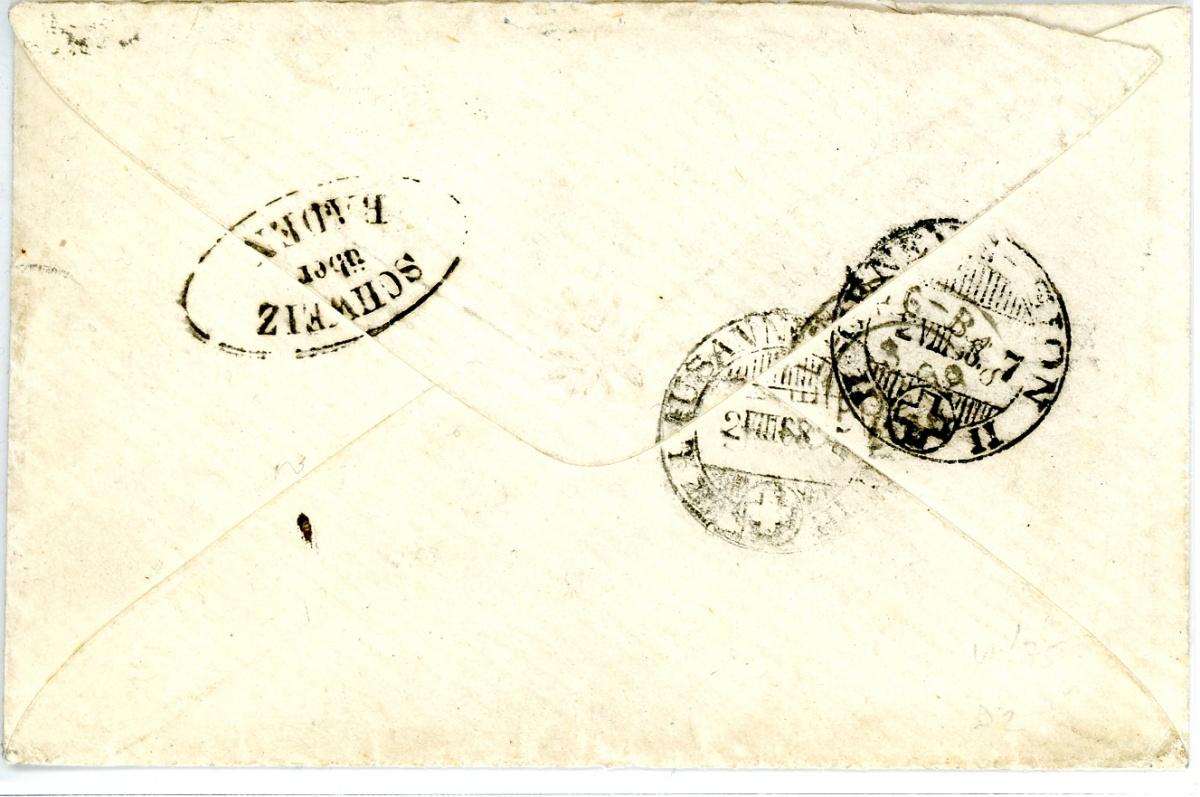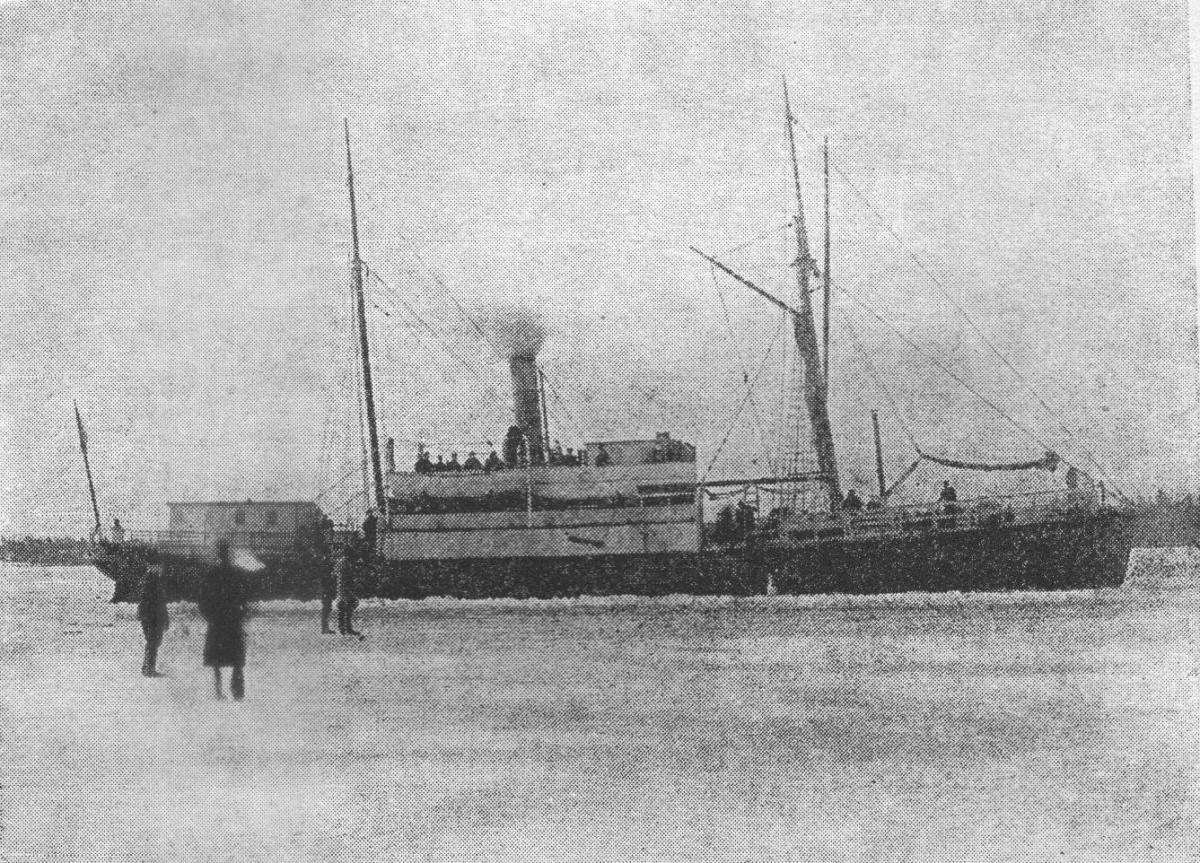de
it
fr
en
Cover from Morges, on Lake Geneva, to the northern point of Spitsbergen (Norway) to the ship's doctor Dr. E. Nyström, on the former Swedish mail ship "Sofia".
An early document, the oldest known document after Spitsbergen, from polar research (Fig.1).

Postage declaration
1 Fr. postage for single weight up to 15 gr. to Norway up to the consignee paid (stamp PD) according to tariff of 23.5.1867. Germany charged Switzerland 24 Kreuzer (marked with red chalk) for forwarding, Germany still had to pay 2.5 silver-groschen (blue-red) to Norway.
Carriage
The letter was postmarked by Morges 2.8.1868 via Bahn (on the back side Trainpostmark Genève-Sion 2.8.1868 "Stamp group 85"), above Lausanne 2.8.1868 (At the back Local stamp "Stamp group 85") to Basel (Back: Heidelberg - Basel 3.8.1868 "Fragments of the German railway stamp") then to Grand Duchy Baden (reverse side stamp: Switzerland-Baden). Because of missing stamp references the way beyond the country Baden can be only can be suspected. From Hamburg, the letter could be sent via the Hamburg shipping line - Hammerset to Tromsö, and from there via the supply ship. "Severin" to Spitsbergen to the "Sofia", where he was given the ship's doctor Dr. E. Nyström (Fig. 2).

polar expedition
The year is 1868, the fourth and last year financed by Sweden. Expedition to Spitsbergen, which was led by Prof. Erik Nordenskiöld. should be. According to the itinerary, in summer (June 28, 1868 - Oct 20, 1868) you should stay up to the beginning of the autumn the bear island visit and the fauna, the flora, as well as the Geography and Geology of Spitsbergen. In addition, it was intended to study depth measurements, meteorological and magnetic observations and much more. Any There were no settlements on Spitsbergen in 1868. A coal depot of a vessel expressly rented for this purpose at a suitable location in the northwestern part of the Spitsbergen, so that the Sophia, the expedition ship (Fig.3), in the course of the autumn, so at the beginning or middle of September, here start and coal I could reload. Also a part of the scholars should then be able to return to Norway. The Remaining crew should try to move with the Sofia as far north as possible without risking the freezing of the ship and, if necessary, in a deep freeze. the bay of the northernmost archipelago of the old world, the seven Islands to spend the winter.

The participants of the expedition were:
| E Nordenskiöld | Geologe |
|---|---|
| Malmgren | Zoologe |
| Freiherr von Otter | Kapitän |
| F. Smitt | Zoologe |
| U.L Walander | Lieutnant |
| Berggren | Botaniker |
| Dr. E Nyström | Arzt |
| Th. Fries | Botaniker |
| G. Lemström | Physiker |
| G Nauckhoff | Geologe |
| F. Holmgren | Zoologe |
Moreover, the ship had a crew of 14. These also included a zoological curator, Svenson, and six hunters hired in Norway. But it came differently. The Sofia went on 07.07.1868 from Gothenburg to Aalesund, 16 - 20 July 1868 Tromsö, 22 - 27 July 1868 Bear Island, 31 July 1868 Green Harbour and early August to Advent Bay, August 16, 1868 Kings Bay, 20. August 1868 near Smerenburg, on the island of Amsterdamoya, where she met with an Swedish ship (name not mentioned in literature), which is carrying coal and mail. brought with him, met. Around September 10th and 15th there was another meeting on Spitsbergen with the small Swedish ship "Severine". Also this time the coal and mail I brought it for you. Probably also the letter shown here (fig.1). On board the ship "Severine" then returned as planned, several (but not all!) Expedition members returned to Norway. The other members of the expedition then went on to a contiguous on the north coast of Spitsbergen, where on Sept. 19, 1868, an ice belt Advance in the ice up to 81° 42´ N, 17° 30´Ost., to the northernmost of the a point visited by a vehicle. Shortly afterwards the accident happened. On 4 October 1868 in a violent storm, the Sofia was severely damaged by the impact with an ice floe. They returned and the crew had to check the leak in the fuselage several times during the trip. back to Spitsbergen. In the KingsBay the Sofia was then so far that nothing stood in the way of a return journey any longer, so that it was possible to 11.10.1868 from there beginning, on 20 October 1868 reached Tromsö and from there then to Gothenburg, which was reached on November 15, 1868.
Correspondence
The professor, palaeontologist and botanist Oswald Heer from Zurich stood with scientists of the expedition. Many of the research results he used in his book "Flora fossilis arctica". Prof. Oswald Heer died 1883 in Lausanne. Perhaps he was the sender of the letter.
$comments